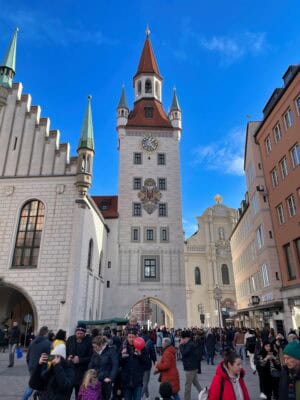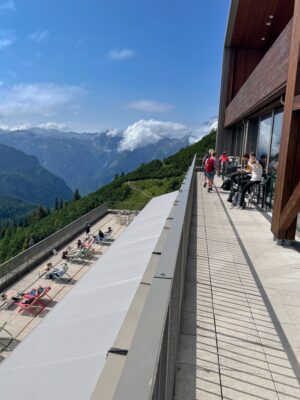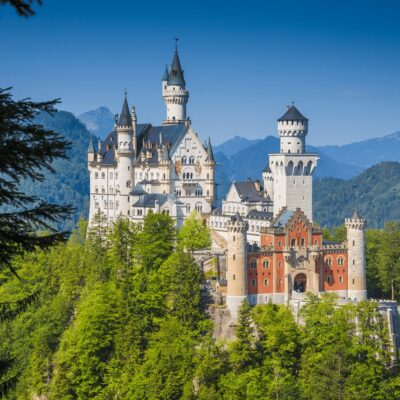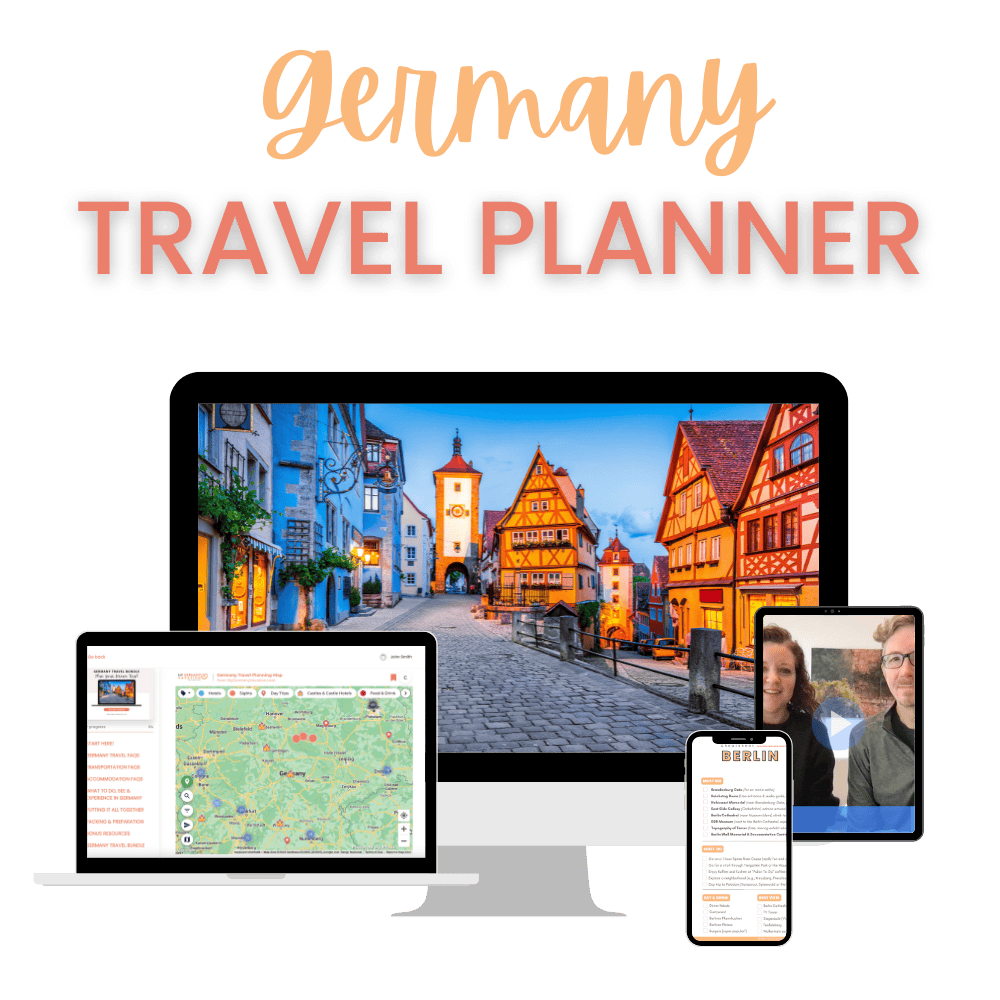Bavaria (Bayern) and the German Alps Travel Guide
This post may contain affiliate links. Read my disclaimer policy.
The southern German state of Bavaria (Bayern in German) is one of the most popular parts of Germany for travelers to visit.
Not only can you visit Munich, the largest city in Bavaria and home of Oktoberfest, you can spend time in the German Alps, drive the Romantic Road area and visit picturesque towns and villages along the way, tour the famous fairytale Neuschwanstein castle – and much more!
This guide will help you start planning what to do and see in Bavaria and the German Alps, where to stay, best tours, day trip ideas, and more.
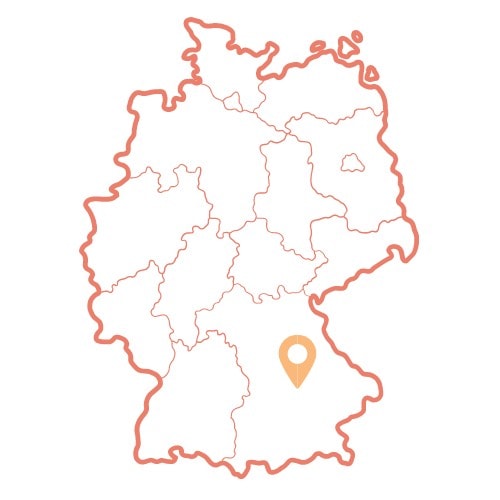
What to Do and See in Bavaria and the Alps
It’s no wonder that Bavaria is one of the most popular destinations in Germany. Bavaria offers something for everyone, from snow-capped peaks to spectacular castles, alpine lakes, world-class museums, Oktoberfest, automobile museums, and enchanting small towns and villages. Read more about these areas in the following blog posts!
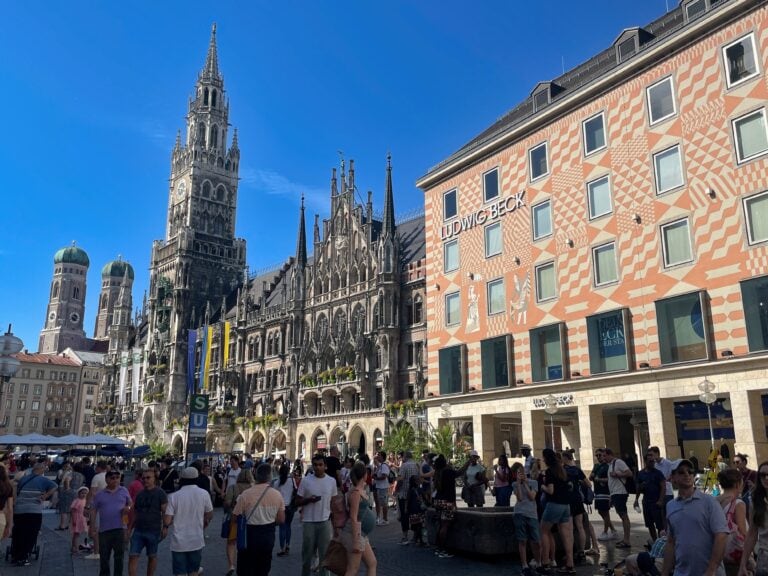
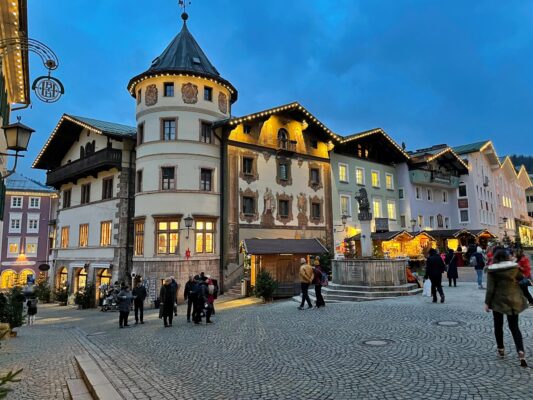
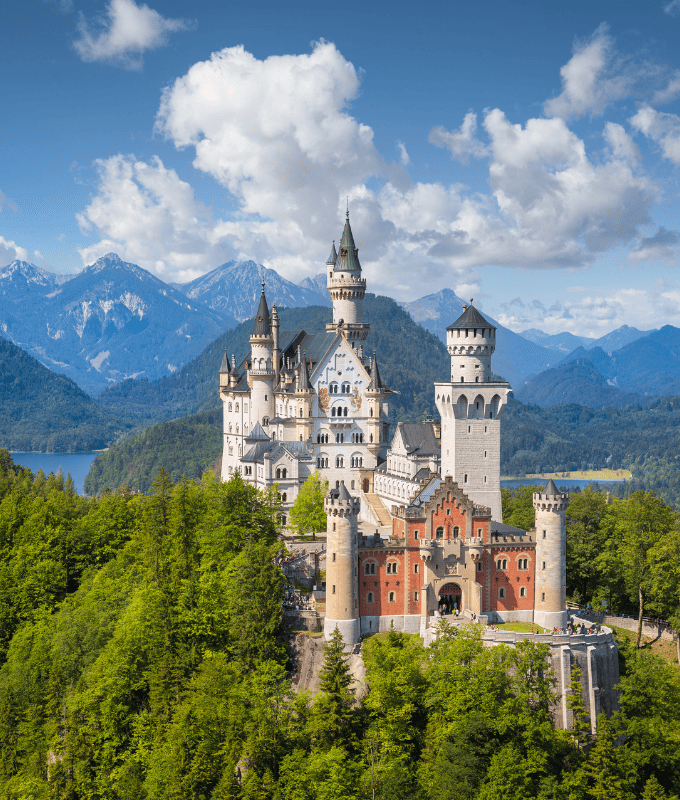

Best Accommodations in Bavaria and the Alps
You can find all kinds of hotels, B&Bs, guest houses, apartments, and vacation houses throughout Bavaria and in the Alps.
We recommend using Booking because you can easily search for hotels and apartments (and we’ve actually found apartments we’ve found on Airbnb are actually cheaper on Booking!), you can book places without having to pre-pay, and they have a price guarantee. Plus, it’s SO convenient to have most or all of your reservations in one place, rather than scattered around various website and email inboxes.
If you’re looking for an apartment in Bavaria or the Alps, do a search on Booking. We’ve found several great apartments there (less than what we saw on Airbnb for the same apartment) and it’s SO nice to have all hotel and apartment reservations in one place.
Book your Bavaria or the Alps accommodations in advance! They tend to fill quickly during peak travel times (summer, Christmas, etc.) so I recommend seeing what’s open for your travel dates.
Tip:
If you have our Germany Travel Planner you’ll find recommended hotels on our interactive planning map. Seeing where these hotels are in relation to the top sights makes it a lot easier to find the perfect place to stay. If you don’t yet have it, click here to get access.
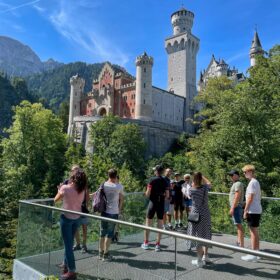
Hotels near Neuschwanstein Castle / Füssen
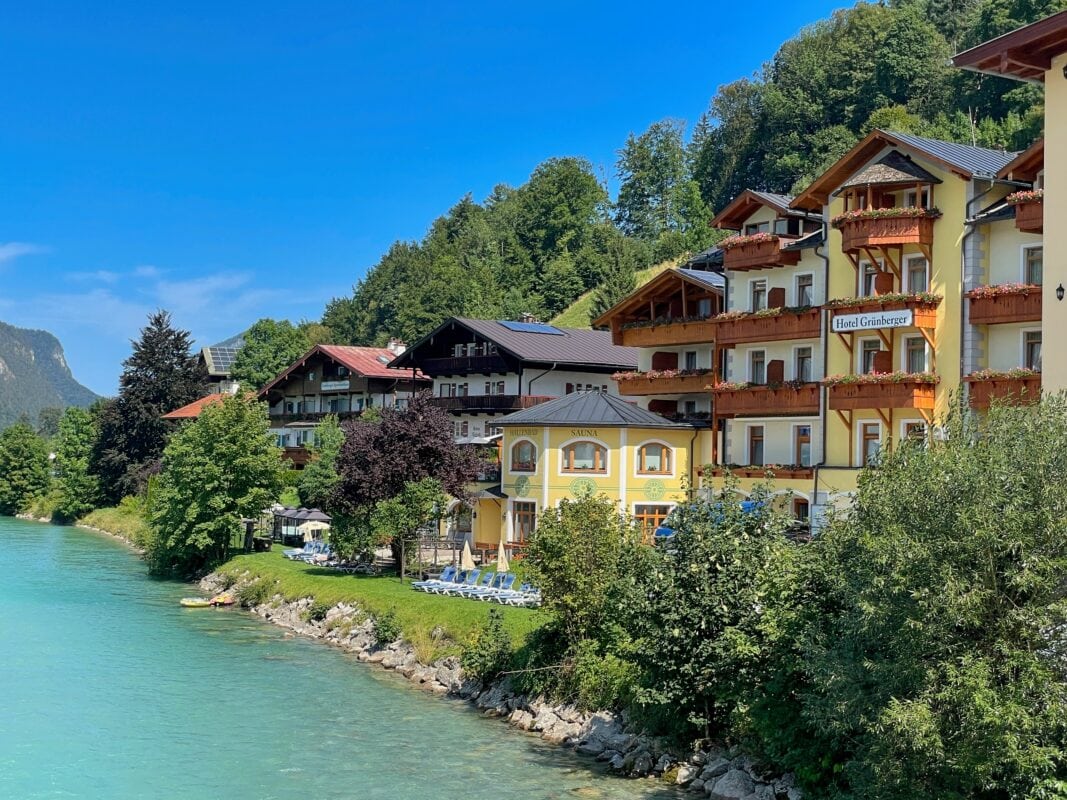
Berchtesgaden Hotels
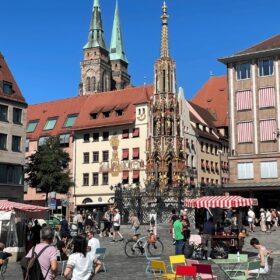
Nuremberg Hotels

Munich Oktoberfest Hotels
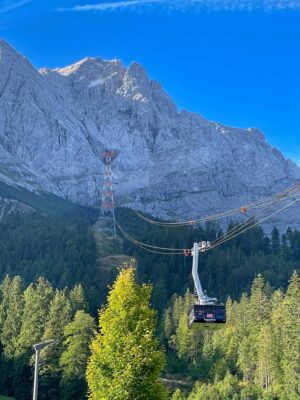
Garmisch-Partenkirchen (Zugspitze) Hotels
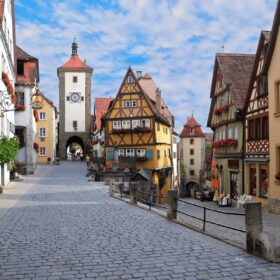
Rothenburg Hotels
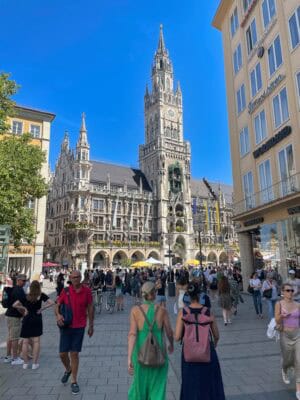
Munich Hotels
Know Before You Go
Airport: Munich International Airport (MUC)
Currency: Euro
Language: The official language of Germany is German (Deutsch)
Time zone: Central European Time (CET / GMT+ 2 / 6 hours ahead of US EST)
Germany Visa: tourists from the US, Canada, and several other countries do not need a visa to visit Germany for under 90 days.
Germany Electricity Socket: Germany uses different voltage and sockets than in North America, the UK, and other parts of the world. Read our guide to adapters and converters so you can safely use your tech in Germany.
Germany SIM card: Read our guide here to SIM cards and other ways to use your phone in Germany.
Germany Car Rentals: We find great deals on rental cars here. You can also check out our scenic Germany road trips article here.
Best Tours, Tickets & Day Trips in Bavaria and The Alps
One of the best things about visiting Bavaria is that no matter where you go you have endless things to do and countless day trip options. You can plan your own day trips for maximum flexibility or book a guided tour for maximum relaxation and convenience. Here are some ideas to get your planning started.
FROM OUR AFFILIATES…

Munich Food Tour
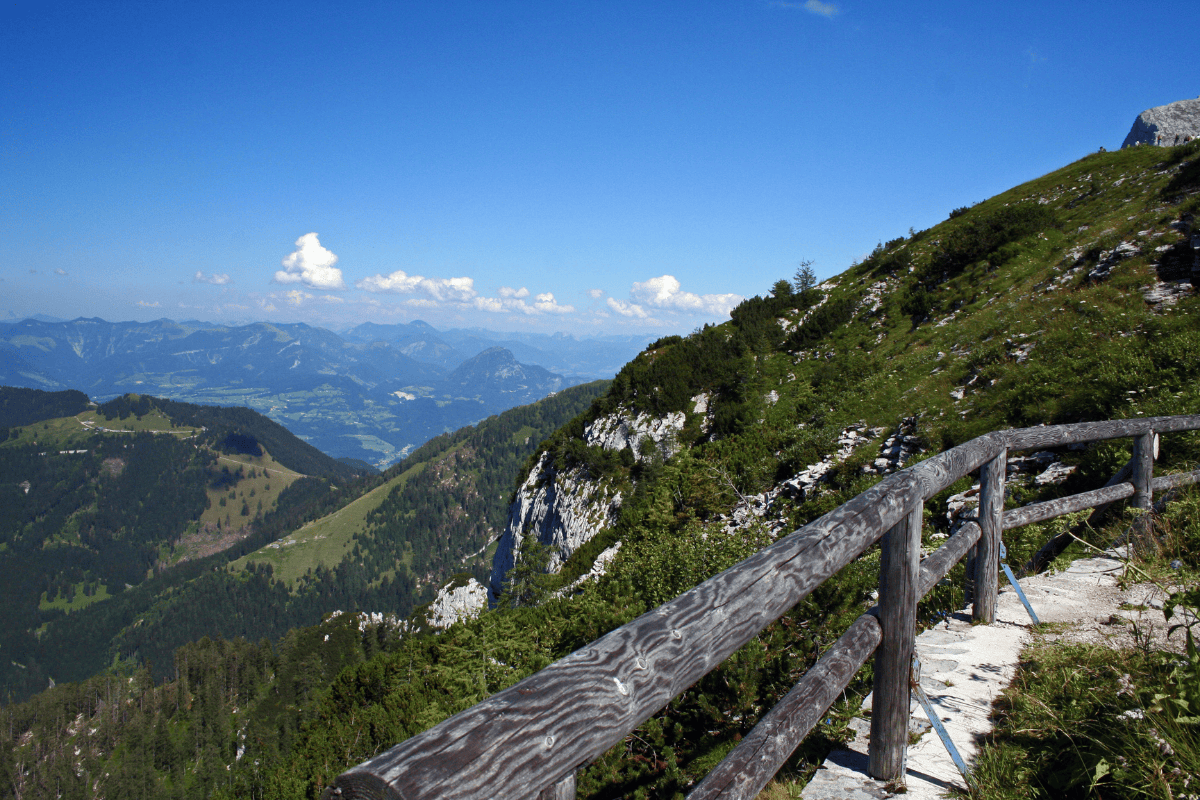
Visit Eagle’s Nest
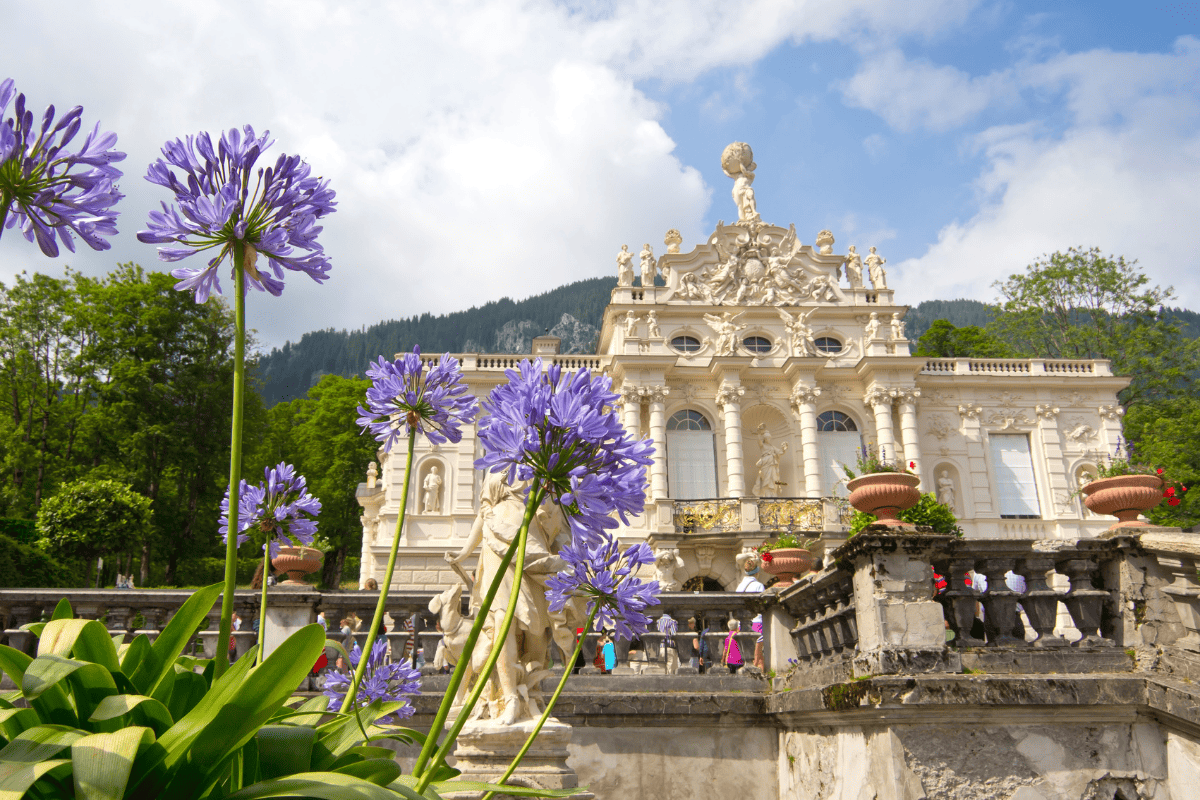
Visit Linderhof Palace
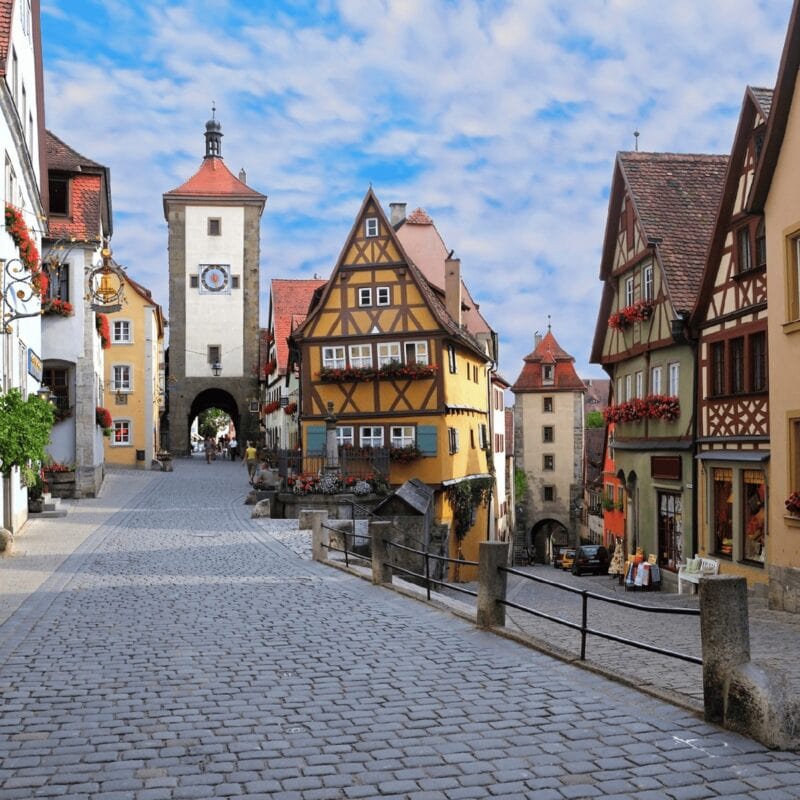
Explore the Romantic Road
FROM OUR AFFILIATES…
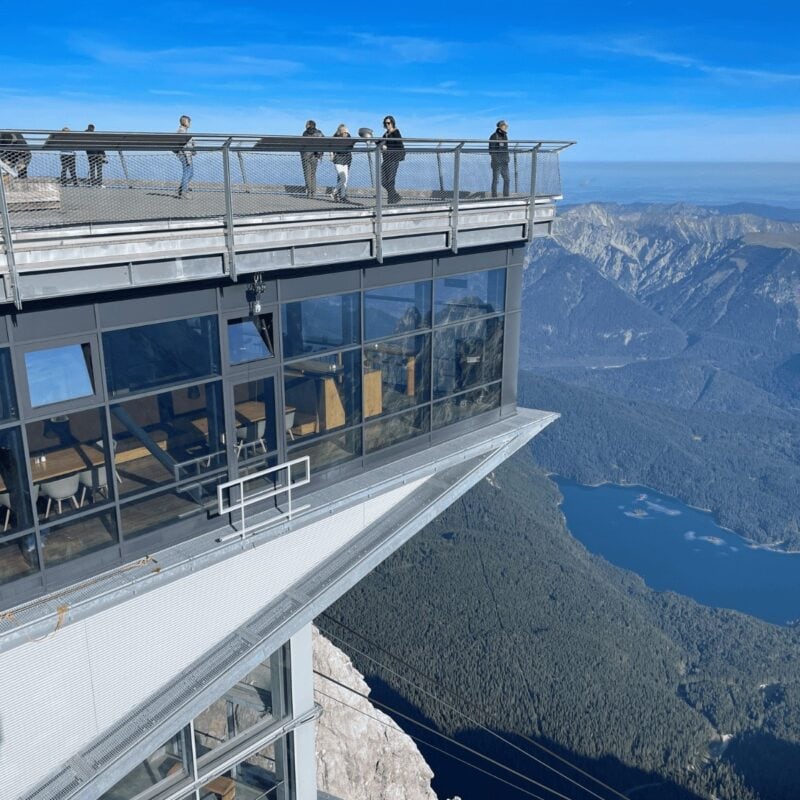
Visit Zugspitze
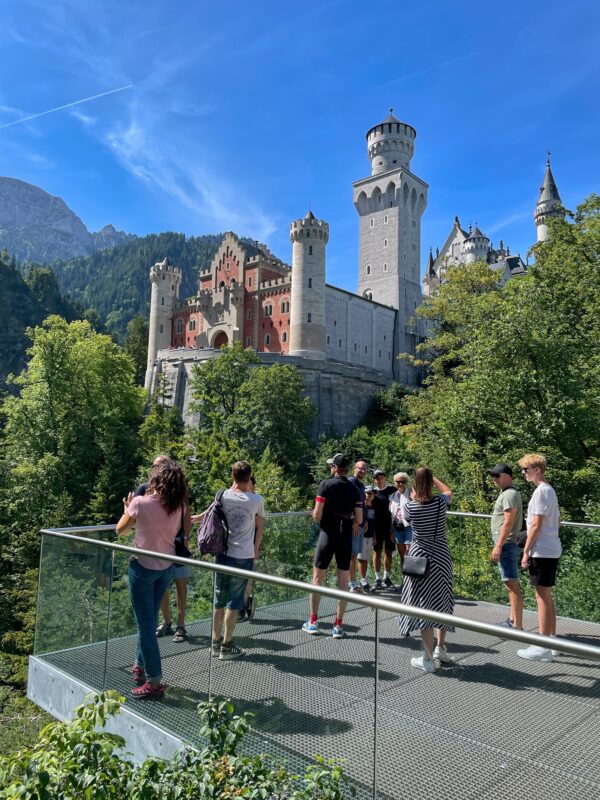
Visit Neuschwanstein
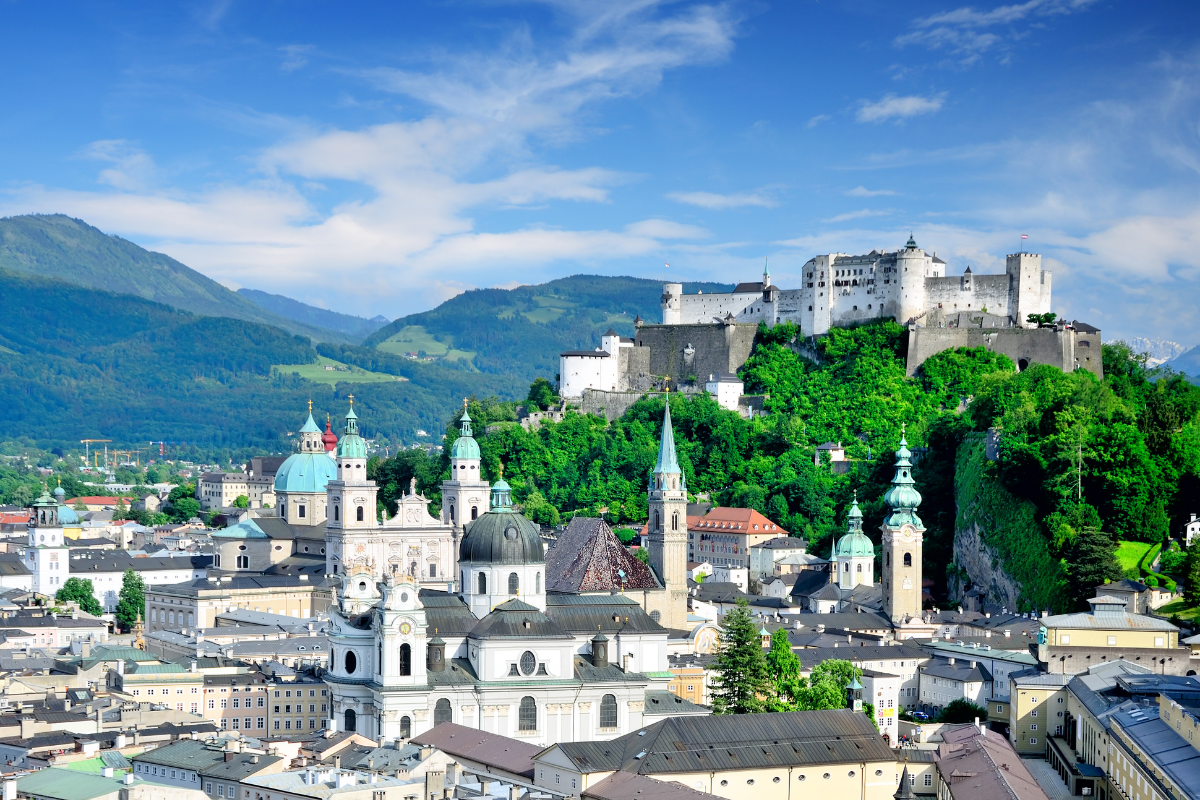
Visit Salzburg
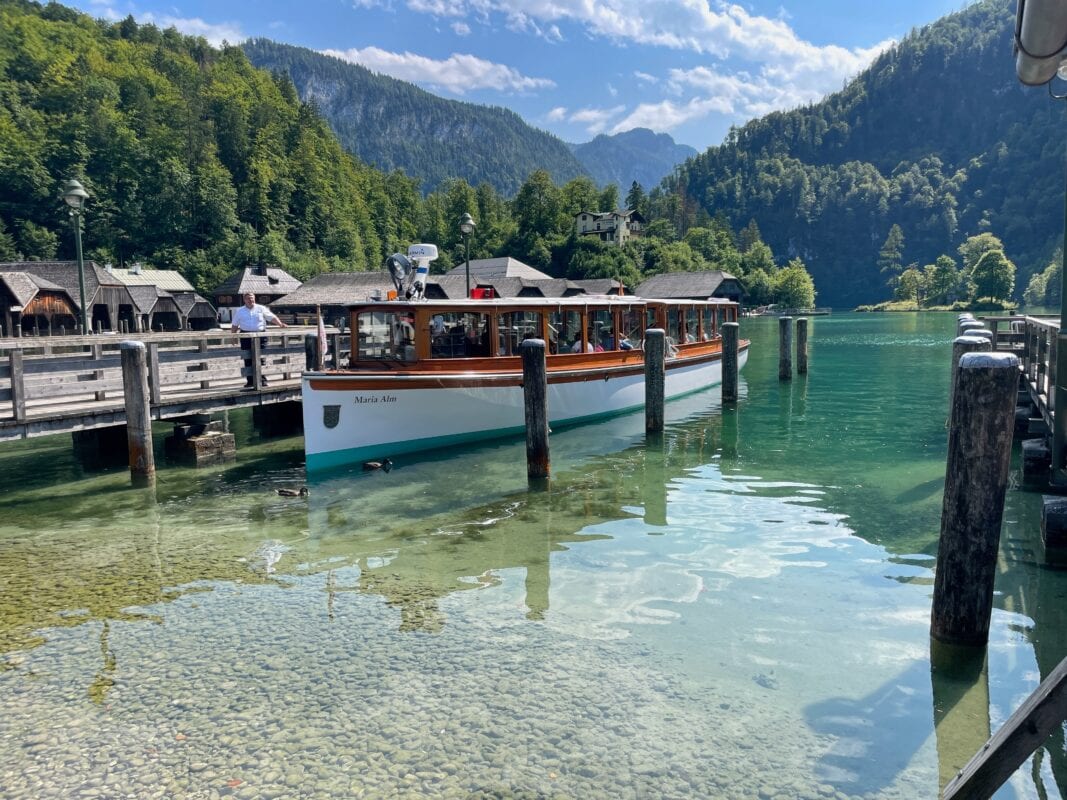
Visit Königsee Lake, Berchtesgaden
Bavaria and Alps Travel FAQ
Where is Bavaria Located?
Bavaria is in southeastern Germany and borders the countries of Czechia, Austria, Switzerland (barely) – see the map below.
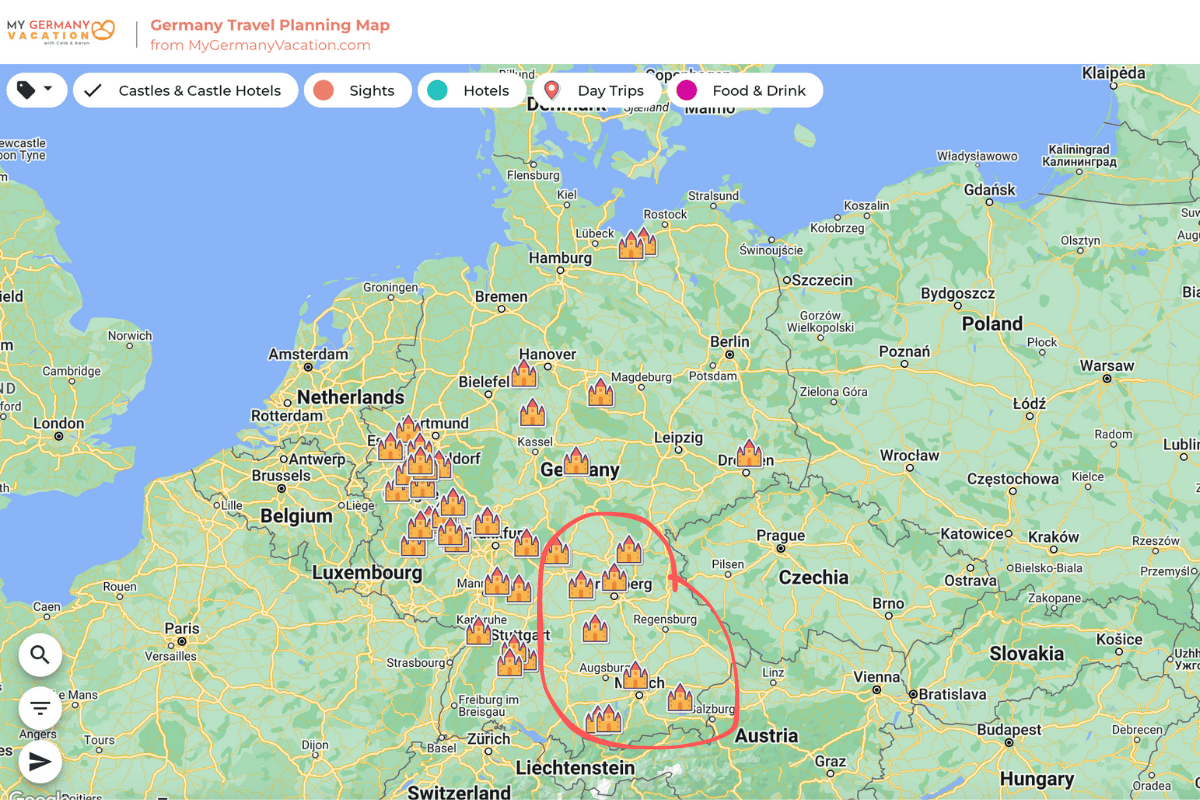
Where are the German Alps Located?
The German Alps are in the southernmost part of Germany in the state of Bavaria along the border with Austria – see the map below.
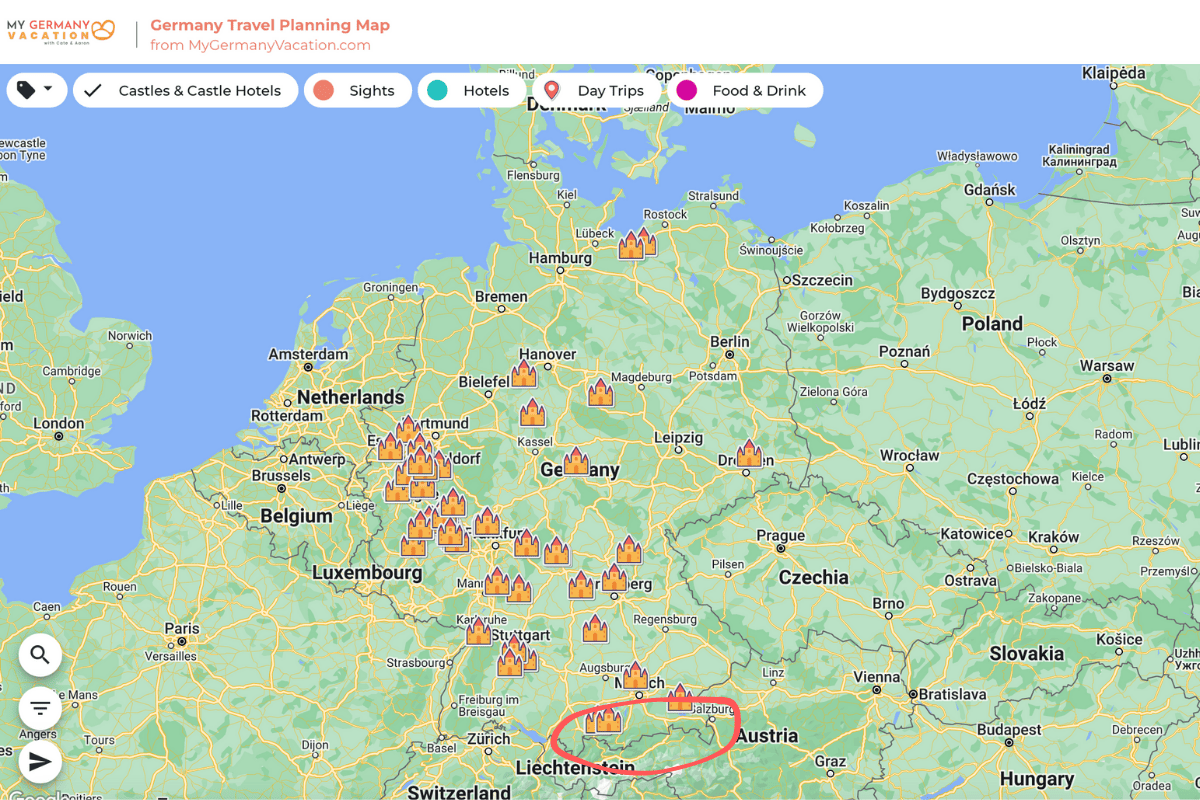
Where do I Get That Map?
If you have our Germany Travel Planner, you’ll find recommended hotels on our interactive planning map. Seeing where these hotels are in relation to the top sights makes it a lot easier to find the perfect place to stay. If you don’t have it yet, click here to get access.

How Many Days to Spend in Bavaria and the Alps?
You could spend just a couple days in one city or area as part of your overall Germany trip — or your entire 1-2 week trip just in Bavaria.
If you’re aiming for just a taste of Bavaria or the Alps, choose 1 location and add a day trip. For example, Nürnberg with a day trip to Rothernburg ob der Tauber. Or Munich with a day trip to Neuschwanstein castle.
If you’d like to get to know Bavaria in more detail, you could, for example, do a road or train trip around the entire state and include the Romantic Road area, Munich, Neuschwanstein castle, Zugspitze, Berchtesgaden, as well as visits to lakes, hikes, and other fun outdoor activities (or Christmas markets in December).
Is it Safe to Travel in Bavaria and the Alps?
Yes. Traveling in Germany is safe overall. Use everyday common sense and take the usual precautions.
Are Bavaria and the Alps Worth Visiting?
Yes! The Alps are stunning and the state of Bavaria has so much to do and see including vibrant cities, picturesque towns and villages, festivals, local beer, festivals, castles and palaces, lakes, and outdoor activities.
Are Bavaria and the Alps Expensive?
While some parts of this area are popular vacation destinations and prices rise during the peak season or big events (like Oktoberfest), prices are fairly similar to the rest of Germany.
What’s the Closest Airport?
If you plan to visit Bavaria or the German Alps, Munich is the best airport to fly into. From there you can easily and quickly reach all destinations by train or car.
You could, however, also fly into Frankfurt International Airport, Stuttgart International Airport or Airport Nürnberg.
What’s The Best Way to Get to Your Hotel?
If you’re going from the airport into the nearest city, you can take public transportation, grab a taxi or use the FreeNow app.
All Bavaria and German Alps Posts…
The Easy Way to Enjoy the BEST of Germany.
Planning a trip to Germany is surprisingly overwhelming – even for seasoned travelers!
That’s why we created the Germany Travel Planner.
With our 30+ years Germany travel experience and expertise by your side, you’ll navigate the complexities of trip planning effortlessly. And then enjoy a relaxed and memorable adventure filled with unique experiences tailored to your preferences!

